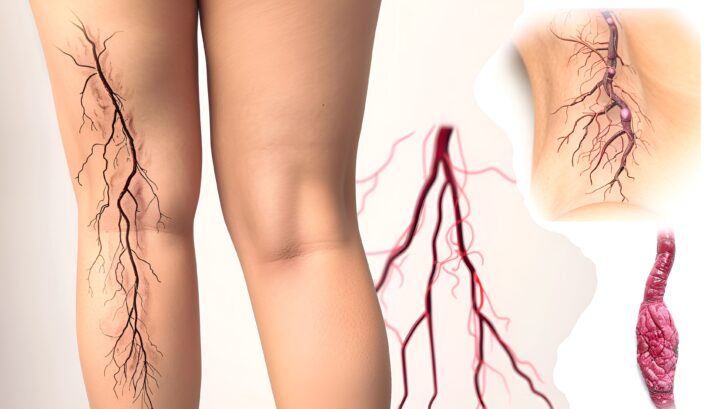Arterial and venous conditions are common vascular problems, but they affect the body in very different ways. Understanding these differences is essential for timely diagnosis and effective treatment. In this blog, we will explore how arterial and venous conditions differ, their symptoms, and how they are diagnosed and treated. Dr. Ravul Jindal emphasizes the importance of recognizing these conditions early to ensure the best possible outcome.
What Are Arterial and Venous Conditions?
Arterial conditions affect the arteries, the blood vessels that carry oxygen-rich blood from the heart to the rest of the body. When these arteries become narrowed, blocked, or damaged, it can lead to various problems. A common example is Peripheral Arterial Disease (PAD), where reduced blood flow to the legs and feet causes pain and can result in serious complications if left untreated.
Venous conditions, on the other hand, involve the veins, the vessels responsible for returning deoxygenated blood back to the heart. When veins become weakened or damaged, it can lead to Chronic Venous Insufficiency (CVI), varicose veins, and venous ulcers. These conditions often cause swelling, heaviness, and discomfort, especially in the legs.
Key Differences Between Arterial and Venous Conditions
- Blood Flow Issues: Arterial conditions reduce the flow of oxygenated blood to tissues, leading to pain, cold skin, and ulcers that are slow to heal. Venous conditions are related to the poor return of deoxygenated blood to the heart, causing fluid buildup and swelling.
- Symptoms: Arterial symptoms include intermittent claudication (pain in the legs during walking), cold or pale skin, and a decrease in hair growth on the legs. Venous symptoms tend to be swelling, varicose veins, skin discoloration, and heaviness in the legs.
- Pain Differences: Arterial pain is often sharp and occurs with activity, worsening during exercise. On the other hand, venous pain is typically dull, constant, and worsens with prolonged standing or sitting.
- Location of Symptoms: Arterial issues generally affect the feet, toes, and lower legs, often leading to ulcers that are hard to heal. Venous problems mainly affect the lower legs and ankles, where blood pools due to improper circulation.
Diagnosis and Treatment for Arterial and Venous Diseases
If you suspect that you may have an arterial or venous condition, it’s essential to consult a healthcare professional. Your doctor will conduct a physical exam and may recommend tests such as an ankle-brachial index (ABI) for arterial issues or ultrasound for venous conditions to assess blood flow and diagnose the condition.
Treatment for Arterial Conditions: Treatments for arterial conditions focus on improving blood flow and include lifestyle changes like exercise, medication to manage risk factors such as cholesterol, and in severe cases, surgery or procedures like angioplasty or bypass surgery.
Treatment for Venous Conditions: Venous diseases are typically treated with compression therapy, elevation of the legs, and medications to improve circulation. In some cases, sclerotherapy or vein stripping may be recommended to remove varicose veins.
Preventing Arterial and Venous Diseases
Prevention is key for both types of vascular diseases. A healthy lifestyle, including regular exercise, a balanced diet, and avoiding smoking, can help reduce your risk. For venous health, elevating your legs and wearing compression stockings may help prevent fluid buildup and alleviate symptoms.
Understanding the difference between arterial and venous conditions is essential for recognizing the symptoms early on and getting the proper treatment. If you’re experiencing signs of either condition, seek professional help to ensure effective diagnosis and care.


